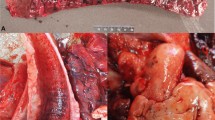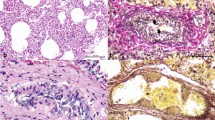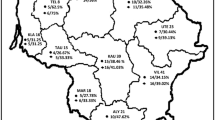Abstract
Ovine gammaherpesvirus 2 (OvGHV2) is a member of Macavirus genus, subfamily Gammaherpesvirinae, family Herpesviridae, and causes sheep associated-malignant catarrhal fever (SA-MCF) in a wide range of ungulates. However, no descriptions of SA-MCF and/or infections due to OvGHV2 were identified in the wild boar (Sus scrofa). This study investigated the occurrence of OvGHV2 in the lungs (n = 44) of asymptomatic, free ranging wild boars captured in several regions of Paraná State, Southern Brazil. A PCR assay targeting the OvGHV2 tegument protein gene amplified OvGHV2 DNA in 4.55% (2/44) of the pulmonary tissues evaluated. Sequence analysis confirmed that the OvGHV2 strains herein identified have 98.4% deduced amino acid (aa) sequence identity with the prototype strain of OvGHV2 and 96.4–100% aa identity with similar strains of OvGHV2 detected in several animal species from diverse countries. These findings confirmed that these two wild boars were infected by OvGHV2, represent the first description of this infection in these animals, and add to the number of pathogens identified in this animal species. Furthermore, these findings contrast earlier descriptions of OvGHV2 in swine since in all previous reports the infected pigs demonstrated clinical manifestations of disease. Consequently, these wild boars from Southern Brazil were subclinically infected or suffered asymptomatic infections by OvGHV2.


Similar content being viewed by others
Data availability
The OvGHV2 sequences derived from this study are deposited in GenBank https://www.ncbi.nlm.nih.gov/genbank/ (Accession # OQ511653 and OQ511654).
References
ICTV (2021) International committee on taxonomy of viruses. Virus taxonomy: 2021 release - order Herpesvirales. https://ictv.global/report/chapter/herpesviridae/herpesviridae/macavirus
Ackermann M (2006) Pathogenesis of gammaherpesvirus infections. Vet Microbiol 113(3–4):211–222. https://doi.org/10.1016/j.vetmic.2005.11.008
Li H, Cunha CW, Taus NS (2011) Malignant catarrhal fever: understanding molecular diagnostics in context of epidemiology. Int J Mol Sci 12(10):6881–6893. https://doi.org/10.3390/ijms12106881
Headley SA, Oliveira TES, Cunha CW (2020) A review of the epidemiological, clinical, and pathological aspects of sheep-associated malignant catarrhal fever with emphasis on Brazil. Braz J Microbiol 51:1405–1432. https://doi.org/10.1007/s42770-020-00273-6
Gauger PC, Patterson AR, Kim WI, Stecker KA, Madson DM, Loynachan AT (2010) An outbreak of porcine malignant catarrhal fever in a farrow-to-finish swine farm in the United States. J Swine Health Prod 18(5):244–248
Løken T, Aleksandersen M, Reid H, Pow I (1998) Malignant catarrhal fever caused by ovine herpesvirus-2 in pigs in Norway. Vet Rec 143(17):464–467. https://doi.org/10.1136/vr.143.17.464
Lapp S, Forster C, Kummrow M, Wohlsein P, Haist V (2015) Malignant catarrhal fever in a Vietnamese pot-bellied pig. A potential threat to pigs in mixed-species exhibits? Tierarztliche Praxis. Ausgabe G, Grosstiere/Nutztiere 43(3):165–168. https://doi.org/10.15653/tpg-140494
Wessels M, Harwood D, Maley M, Willoughby K, Balfour C (2011) Malignant catarrhal fever in kune kune pigs in the UK. Vet Rec 169:156. https://doi.org/10.1136/vr.d1564
Syrjala P, Saarinen H, Laine T, Kokkonen T, Veijalainen P (2006) Malignant catarrhal fever in pigs and a genetic comparison of porcine and ruminant virus isolates in Finland. Vet Rec 159(13):406–409. https://doi.org/10.1136/vr.159.13.406
Alcaraz A, Warren A, Jackson C, Gold J, McCoy M, Cheong SH, Kimball S, Sells S, Naomi ST, Divers T, Li H (2009) Naturally occurring sheep-associated malignant catarrhal fever in North American pigs. J Vet Diagn Invest 21(2):250–253. https://doi.org/10.1177/104063870902100214
Costa EA, Bomfim MR, Fonseca FG, Drumond BP, Coelho FM, Vasconcelos AC, Furtini R, Paixao TA, Tsolis RM, Santos RL, Resende M (2009) Ovine herpesvirus 2 infection in Foal, Brazil. Emerg Infect Dis 15(5):844–845. https://doi.org/10.3201/eid1505.081664
O’Toole D, Li H (2014) The pathology of malignant catarrhal fever, with an emphasis on ovine herpesvirus 2. Vet Pathol 51(2):437–452. https://doi.org/10.1177/0300985813520435
Li H, Cunha CW, Taus NS, Knowles DP (2014) Malignant catarrhal fever: inching toward understanding. Annul Rev Anim Biosci 2:209–233. https://doi.org/10.1146/annurev-animal-022513-114156
Albini S, Zimmermann W, Neff F, Ehlers B, Hani H, Li H, Hussy D, Engels M, Ackermann M (2003) Identification and quantification of ovine gammaherpesvirus 2 DNA in fresh and stored tissues of pigs with symptoms of porcine malignant catarrhal fever. J Clin Microbiol 41(2):900–904. https://doi.org/10.1128/JCM.41.2.900-904.2003
Hoffmann D, Soeripto S, Sobironingsih S, Campbell RS, Clarke BC (1984) The clinico-pathology of a malignant catarrhal fever syndrome in the Indonesian swamp buffalo (Bubalus bubalis). Aust Vet J 61(4):108–112. https://doi.org/10.1111/j.1751-0813.1984.tb07201.x
Headley SA, de Lemos GAA, Dall Agnol AM, Xavier AAC, Depes VCA, Yasumitsu CY, Oliveira TES, Silva LE, Faccin TC, Alfieri AA, Lisboa JAN (2022) Ovine gammaherpesvirus 2 infections in cattle without typical manifestations of sheep-associated malignant catarrhal fever and concomitantly infected with bovine coronavirus. Braz J Microbiol 53:433–446. https://doi.org/10.1007/s42770-021-00653-6
Li H, McGuire TC, Muller-Doblies UU, Crawford TB (2001) A simpler, more sensitive competitive inhibition enzyme-linked immunosorbent assay for detection of antibody to malignant catarrhal fever viruses. J Vet Diagn Invest 13(4):361–364. https://doi.org/10.1177/104063870101300417
Powers JG, VanMetre DC, Collins JK, Dinsmore RP, Carman J, Patterson G, Brahmbhatt D, Callan RJ (2005) Evaluation of ovine herpesvirus type 2 infections, as detected by competitive inhibition ELISA and polymerase chain reaction assay, in dairy cattle without clinical signs of malignant catarrhal fever. J Am Vet Med Assoc 227(4):606–611. https://doi.org/10.2460/javma.2005.227.606
O’Toole D, Li H, Sourk C, Montgomery DL, Crawford TB (2002) Malignant catarrhal fever in a bison (Bison bison) feedlot, 1993–2000. J Vet Diagn Invest 14(3):183–193. https://doi.org/10.1177/104063870201400301
Li H, Brooking A, Cunha CW, Highland MA, O’Toole D, Knowles DP, Taus NS (2012) Experimental induction of malignant catarrhal fever in pigs with ovine herpesvirus 2 by intranasal nebulization. Vet Microbiol 159(3):485–489. https://doi.org/10.1016/j.vetmic.2012.04.016
Costa ÉA, Marco Viott A, Souza Machado G, Quaresma Bomfim MR, Magalhães Coelho F, Portela Lobato ZI, Resende M, Carvalho Guedes RM (2010) Transmission of ovine herpesvirus 2 from asymptomatic boars to sows. Emerg Infect Dis 16(12):2011–2012. https://doi.org/10.3201/eid1612.101453
Meng XJ, Lindsay DS, Sriranganathan N (2009) Wild boars as sources for infectious diseases in livestock and humans. Philos Trans R Soc Lond B Biol Sci 364(1530):2697–2707. https://doi.org/10.1098/rstb.2009.0086
Wickline K (2014) "Sus scrofa" (on-line), animal diversity Web. https://animaldiversity.org/accounts/Sus_scrofa/. Accessed 20 Feb 2023
Barrios-Garcia MN, Ballari SA (2012) Impact of wild boar (Sus scrofa) in its introduced and native range: a review. Biol Invasions 14(11):2283–2300. https://doi.org/10.1007/s10530-012-0229-6
Ruiz-Fons F, Segalés J, Gortázar C (2008) A review of viral diseases of the European wild boar: effects of population dynamics and reservoir role. Vet J 176(2):158–169. https://doi.org/10.1016/j.tvjl.2007.02.017
Santo ACD, Gressler LT, Costa SZR, Centenaro JR, Dazzi IM, Martins M (2022) Porcine circovirus 2 and 3 in wild boars in Southern Brazil. Cienc Rural 52(2):e20210209. https://doi.org/10.1590/0103-8478cr20210209
Silva Andrade J, Loiko MR, Schmidt C, Vidaletti MR, Lopes BC, Cerva C, Varela APM, Tochetto C, Maciel ALG, Bertagnolli AC, Rodrigues RO, Roehe PM, Lunge VR, Mayer FQ (2022) Molecular survey of porcine respiratory disease complex pathogens in Brazilian wild boars. Prev Vet Med 206:105698. https://doi.org/10.1016/j.prevetmed.2022.105698
Souza TCGD, Gava D, Schaefer R, Leme RA, Silva Porto G, Alfieri AA (2021) Porcine circovirus 3a field strains in free-living wild boars in Paraná State, Brazil. Animals 11(6):1634. https://doi.org/10.3390/ani11061634
Porto GS, Leme RA, Dall Agnol AM, Souza TCGD, Alfieri AA, Alfieri AF (2021) Porcine lymphotropic herpesvirus (Gammaherpesvirinae) DNA in free-living wild boars (Sus scrofa Linnaeus, 1758) in Brazil. J Vet Sci 22(6):e81. https://doi.org/10.4142/jvs.2021.22.e81
Porto GS, Dall Agnol AM, Leme RA, Souza TCGD, Alfieri AA, Alfieri AF (2021) Detection of Pestivirus A (bovine viral diarrhea virus 1) in free-living wild boars in Brazil. Braz J Microbiol 52(2):1037–1042. https://doi.org/10.1007/s42770-021-00449-8
Weber MN, Pino EHM, Souza CK, Mósena ACS, Sato JPH, Barcellos DESNd, Canal CW (2016) First evidence of bovine viral diarrhea virus infection in wild boars. Acta Sci Vet 44(1):5. https://doi.org/10.22456/1679-9216.81167
Donin DG, Leme RdA, Alfieri AF, Alberton GC, Alfieri AA (2015) Molecular survey of porcine teschovirus, porcine sapelovirus, and enterovirus G in captive wild boars (Sus scrofa scrofa) of Paraná state, Brazil. Pesq Vet Bras 35(5):403–408. https://doi.org/10.1590/S0100-736X2015000500003
Souza TCGD, Silva VS, Mores MAZ, Kramer B, Leme RA, Silva Porto G, Alfieri AA (2021) Mycoplasma hyopneumoniae in free-living wild boars in Paraná, Brazil. Braz J Microbiol 52(3):1581–1587. https://doi.org/10.1007/s42770-021-00516-0
Kmetiuk LB, Krawczak FS, Machado FP, Paploski IAD, Martins TF, Teider-Junior PI, Serpa MCA, Barbieri ARM, Bach RVW, Barros-Filho IR, Lipinski LC, A PDS, Labruna MB, Biondo AW (2019) Ticks and serosurvey of anti-Rickettsia spp. antibodies in wild boars (Sus scrofa), hunting dogs and hunters of Brazil. PLoS Negl Trop Dis 13(5):e0007405. https://doi.org/10.1371/journal.pntd.0007405
Silva CS, Mendonça TO, Machado DMR, Arias-Pacheco CA, Oliveira WJ, Perin PP, Werther K, Carraro PE, Trevisol IM, Kramer B, Silva VS, Mathias LA, Bürger KP, Lux Hoppe EG (2022) Seropositive wild boars suggesting the occurrence of a wild cycle of Trichinella spp. in Brazil. Animals 12(4):462 https://doi.org/10.3390/ani12040462
Silva VS, Lopes KGS, Bertani GR, Oliveira-Filho EF, Trevisol IM, Kramer B, Coldebella A, Gil LHVG (2017) Seroprevalence of hepatitis E virus (HEV) in domestic non-commercial pigs reared in small-scale farms and wild boar in South of Brazil. 12th International Symposium on the Epidemiology and Control of Biological, Chemical and Physical Hazards in Pigs and Pork, Foz do Iguaçu, Paraná, Brazil. https://ainfo.cnptia.embrapa.br/digital/bitstream/item/165863/1/final8557.pdf
IBAMA (2019) Instrução Normativa Nº 12, de 25 de março de 2019. Renováveis, I.B.d.M.A.e.d.R.N. Brasília, DF, Brazil.:29. https://www.in.gov.br/materia/-/asset_publisher/Kujrw0TZC2Mb/content/id/70006375/do1-2019-04-04-instrucao-normativa-n-12-de-25-de-marco-de-2019-70006233
OVINOPAR (2022) Ovinocultura no Brasil, OVINOPAR. https://www.ovinopar.com.br/wp-content/uploads/2023/02/Ovinocultura-no-Brasil.pdf. Accessed 23 Feb 2023
IBGE (2021) Rebanho de ovinos (ovelhas e carneiros) no Paraná Brasília, DF, Brazil Instituto Brasileiro de Geografia e Estatistica. https://sidra.ibge.gov.br/tabela/3939#resultado. Accessed 27 Jul 2021
Pedrosa F, Salerno R, Padilha FVB, Galetti M (2015) Current distribution of invasive feral pigs in Brazil: economic impacts and ecological uncertainty. Perspect Ecol Conserv 13(1):84–87. https://doi.org/10.1016/j.ncon.2015.04.005
Boom R, Sol CJ, Salimans MM, Jansen CL, Wertheim-van Dillen PM, van der Noordaa J (1990) Rapid and simple method for purification of nucleic acids. J Clin Microbiol 28(3):495–503. https://doi.org/10.1128/jcm.28.3.495-503.1990
Alfieri AA, Parazzi ME, Takiuchi E, Médici KC, Alfieri AF (2006) Frequency of group A rotavirus in diarrhoeic calves in Brazilian cattle herds, 1998–2002. Trop Anim Health Prod 38(7–8):521–526. https://doi.org/10.1007/s11250-006-4349-9
Baxter SI, Pow I, Bridgen A, Reid HW (1993) PCR detection of the sheep-associated agent of malignant catarrhal fever. Arch Virol 132(1–2):145–159. https://doi.org/10.1007/BF01309849
Kumar S, Stecher G, Tamura K (2016) MEGA7: Molecular Evolutionary Genetics Analysis Version 7.0 for Bigger Datasets. Mol Biol Evol. 33(7):1870–1874. https://doi.org/10.1093/molbev/msw054
Hall TA (1999) BioEdit: a user-friendly biological sequence alignment editor and analysis program for Windows 95/98/NT. Nucl Acids Symp Ser 41:95–98
Kimura M (1980) A simple method for estimating evolutionary rates of base substitutions through comparative studies of nucleotide sequences. J Mol Evol 16(2):111–120. https://doi.org/10.1007/bf01731581
Riaz A, Dry I, Dalziel R, Rehman SU, Shah MA, Akhtar HMN, Yousaf A, Baig R (2021) Molecular detection and characterization of ovine herpesvirus-2 using heminested PCR in Pakistan. J Vet Sci 22(4):e51–e51. https://doi.org/10.4142/jvs.2021.22.e51
Ochirkhuu N, Konnai S, Odbileg R, Murata S, Ohashi K (2017) Molecular epidemiological survey and genetic characterization of ovine gammaherpesvirus-2 in Mongolian livestock. J Vet Med Sci 79(12):2040–2042. https://doi.org/10.1292/jvms.17-0203
Headley SA, Lisbôa JAN, Fritzen JTT, Queiroz GR, Alfieri AF, Oliveira RAM, Bracarense APFRL, Flaiban KKMC, Alfieri AA (2013) Ovine herpesvirus type 2-induced malignant catarrhal fever in a heifer. Semin: Cenc-Agrar 34(2):3903–3908. https://doi.org/10.5433/1679-0359.2013v34n6Supl2p3903
Russell GC, Scholes SF, Twomey DF, Courtenay AE, Grant DM, Lamond B, Norris D, Willoughby K, Haig DM, Stewart JP (2014) Analysis of the genetic diversity of ovine herpesvirus 2 in samples from livestock with malignant catarrhal fever. Vet Microbiol 172(1–2):63–71. https://doi.org/10.1016/j.vetmic.2014.04.011
Acknowledgements
Headley, S.A., Alfieri, F.A. and Alfieri, A.A are recipients of the Brazilian National Council of Scientific and Technological Development (CNPq; Brazil) fellowships.
Funding
Brazilian National Council of Scientific and Technological Development (CNPq; Brazil); Coordination for the Improvement of Higher Education Personnel (CAPES; Brazil); National Institute of Science and Technology of Dairy Production Chain (INCT‑Leite).
Conselho Nacional de Desenvolvimento Científico e Tecnológico
Author information
Authors and Affiliations
Corresponding author
Ethics declarations
Ethics approval
This study was approved by the Ethics Committee on Animal Experiments of the Universidade Estadual de Londrina (# 22831.2017.40).
Conflict of Interest
The authors declare that they have no conflict of interest relative to the research, authorship, and/or publication of this manuscript.
Additional information
Responsible Editor: Fernando R. Spilki
Publisher's Note
Springer Nature remains neutral with regard to jurisdictional claims in published maps and institutional affiliations.
Rights and permissions
Springer Nature or its licensor (e.g. a society or other partner) holds exclusive rights to this article under a publishing agreement with the author(s) or other rightsholder(s); author self-archiving of the accepted manuscript version of this article is solely governed by the terms of such publishing agreement and applicable law.
About this article
Cite this article
Headley, S.A., Yasumitsu, C.Y., Dall Agnol, A.M. et al. Molecular detection of ovine gammaherpesvirus 2 in free ranging wild boars (Sus scrofa) from Southern Brazil. Braz J Microbiol (2024). https://doi.org/10.1007/s42770-024-01302-4
Received:
Accepted:
Published:
DOI: https://doi.org/10.1007/s42770-024-01302-4




